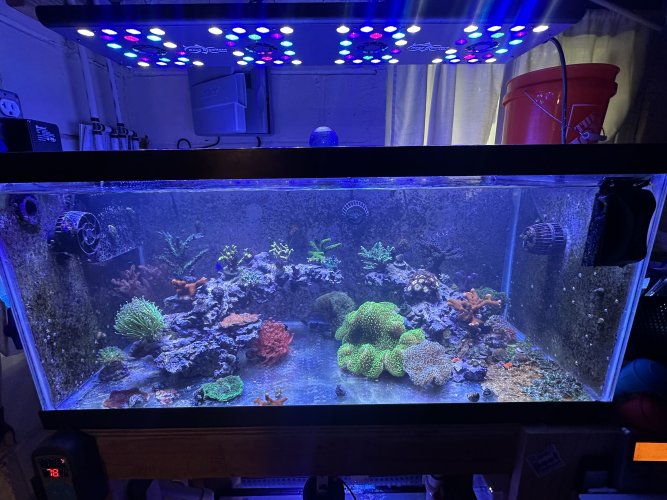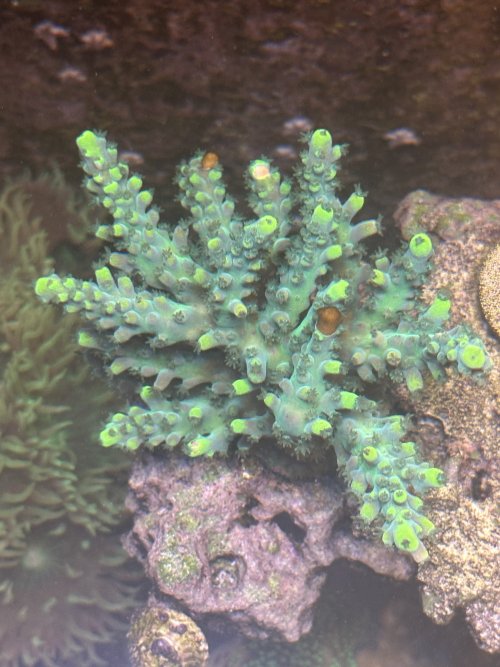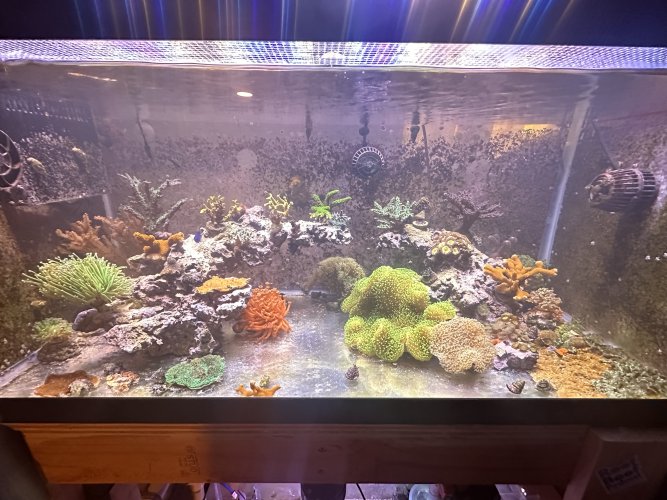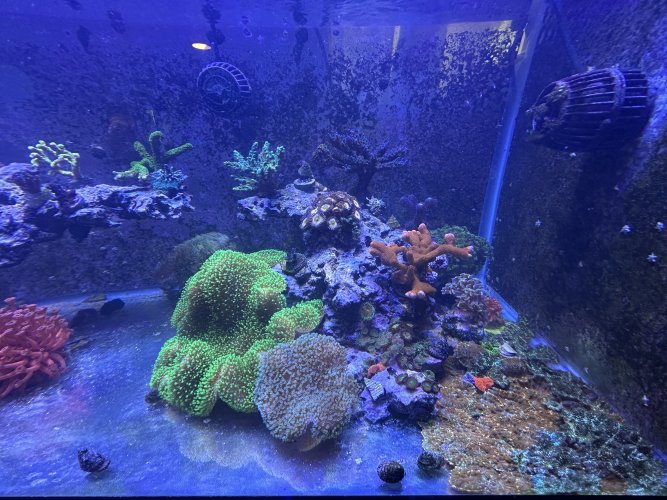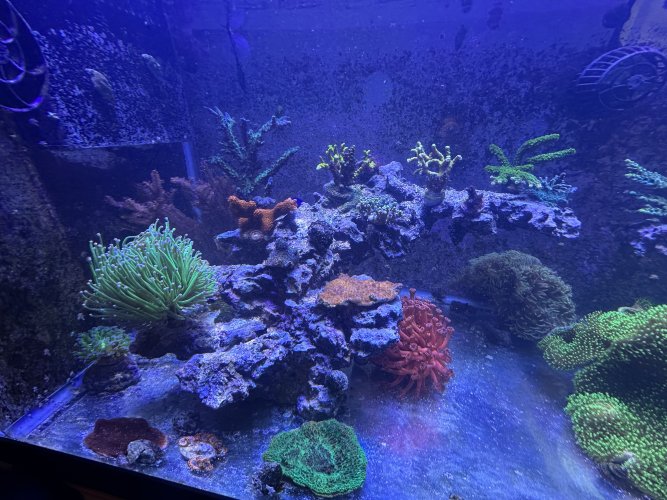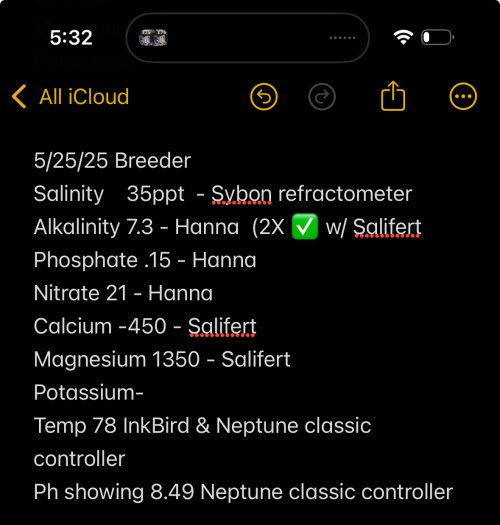Joel T
NJRC Member
Good morning all - sorry this got to be so long winded. You can skip to the bottom if you don’t need to know the reason I think my alk spiked.
I got an alkalinity swing over a two day period. Alk usually sits around 8.0, tested it about two weeks ago and found it at 9.9. I backed off my kalkwasser dosage but didn’t realize my five gallon jug was almost empty so I went from 9.9 to 7.4 in a couple days. Everything in the tank looked fine but about a week later I found my one acro with a couple tips that stripped. I’m talking like an 1/8 of an inch on the tips. The rest of the coral looks healthy. All other parameters looked to be normal. Temp and salinity were also good. I know people get annoyed when you’re asking for help and say all my other parameters are good. I log all my parameters and they’re all around the same to what I usually test. I think my Alk may have spiked high due to kalk slurry at the bottom of the container I did clean the container.
Question: Should I cut back underneath where it stripped? I understand this might be a silly question, I believe the answer will be yes but how far down do I go? It’s not that big but I can cut right below the stn or do I go down as far as I can go on the branch ?
Advice from an experienced sps reefer would be appreciated. If you want my other parameters I can post them. I can also snap a couple pics when the lights come on.
I got an alkalinity swing over a two day period. Alk usually sits around 8.0, tested it about two weeks ago and found it at 9.9. I backed off my kalkwasser dosage but didn’t realize my five gallon jug was almost empty so I went from 9.9 to 7.4 in a couple days. Everything in the tank looked fine but about a week later I found my one acro with a couple tips that stripped. I’m talking like an 1/8 of an inch on the tips. The rest of the coral looks healthy. All other parameters looked to be normal. Temp and salinity were also good. I know people get annoyed when you’re asking for help and say all my other parameters are good. I log all my parameters and they’re all around the same to what I usually test. I think my Alk may have spiked high due to kalk slurry at the bottom of the container I did clean the container.
Question: Should I cut back underneath where it stripped? I understand this might be a silly question, I believe the answer will be yes but how far down do I go? It’s not that big but I can cut right below the stn or do I go down as far as I can go on the branch ?
Advice from an experienced sps reefer would be appreciated. If you want my other parameters I can post them. I can also snap a couple pics when the lights come on.
Last edited:


